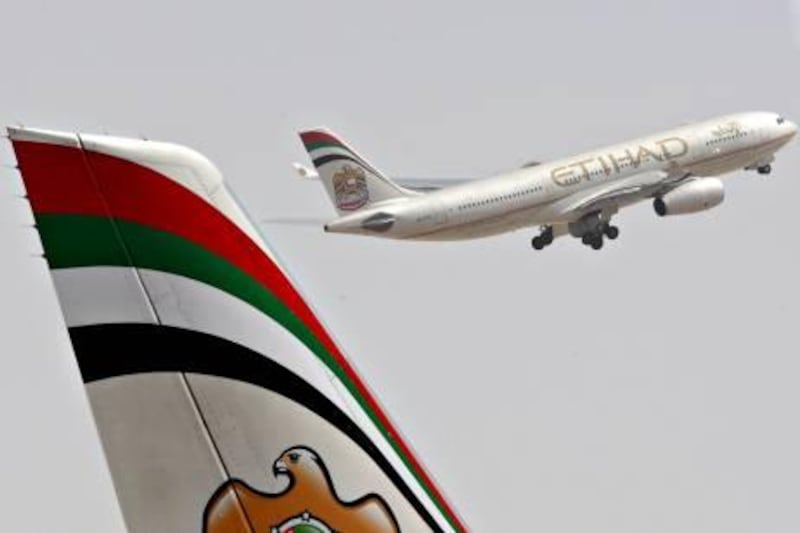GENEVA // An exceptionally strong recovery for passenger travel and air cargo in the third quarter will help airlines in the MENA region reap US$700 million (Dh2.57 billion) in profits this year, reversing the $600m losses suffered last year in the economic downturn, says a new report.
But profits for MENA carriers and global peers will drop by an average of 40 per cent next year on slower economic growth, higher fuel costs and austerity measures in Europe, said the International Air Transport Association (IATA), the airline industry's largest body, representing more than 230 airlines worldwide.
The Middle East region is forecast to post the fastest demand growth this year and next, compared with the rest of the world, as its long-haul airlines take market share from rivals in Europe and its budget airlines continue to open routes.
The industry worldwide is expected to reap $15.1bn in profits, a record amount, helped by $7.7bn in profits from the Asia-Pacific region, driven by China's economic growth.
Profit margins - the ratio of profitability calculated as net income divided by revenues - however, are not as high as in the 1990s, the IATA said.
"Margins remain pathetic," said Giovanni Bisignani, the director general and chief executive of IATA. "The industry is fragile and balancing on a knife edge - any shock could stunt the recovery."
The positive outlook for MENA region carriers will be tempered by slowing growth next year as the industry rebound matures, with $400m in profits for the region and demand growth slowing to 10.5 per cent, compared with a 21.5 per cent increase in demand this year, said the IATA.
The region's long-haul airlines, such as Emirates Airline, Qatar Airways and Etihad Airways, are adding new aircraft three times faster than their rivals in Europe and Asia.
Brian Pearce, the chief economist of the IATA, said the region as a whole would benefit from this rapid fleet expansion.
The Middle Eastern airlines in particular have benefited from market share gains they managed to achieve in long-haul markets. This has been an important part of their profitability," he said.
This year's airline profits come after a disastrous decade in which carriers worldwide lost $51bn between 2001 and last year.
Similarly, the MENA region was home to a number of carriers posting losses last year. While some carriers, such as Emirates and Air Arabia, showed profits, Kuwait Airways, Oman Air and Gulf Air reported significant losses amid their ongoing restructuring efforts.
Analysts expect North American airlines to post $5.1bn in profits this year and $3.2bn next year, aided by high occupancy levels after carriers reduced fleet capacity in 2008 in response to record oil prices.
"One of the positive elements of the last couple of years is that airlines, particularly legacy and network carriers, have had a chance to reorganise their business models," said Saj Ahmad, an analyst at FBE Aerospace, based in the UK.
Latin American airlines are expected to report $1.2bn in profits this year, while African airlines should enjoy about $100m in profits.
The biggest concerns are European airlines, however, with $400m forecast in profits this year and $100m next year despite the continent being one of the largest markets for air travel. "Intra-European market conditions remain depressed as a result of the debt-crisis, slow economic growth, government austerity measures and increasing taxation," the IATA said. In the coming years, the price of air travel could rise 3 to 4 per cent in Europe as a result of environmental and other taxes, the industry body has forecast.





